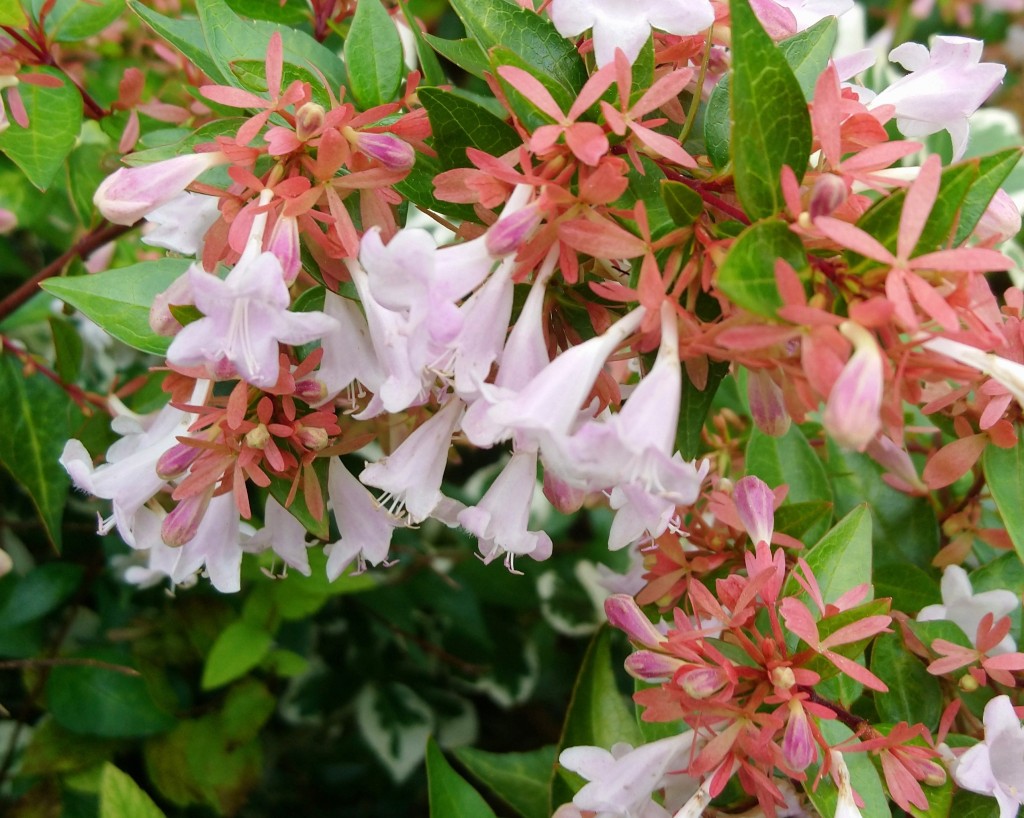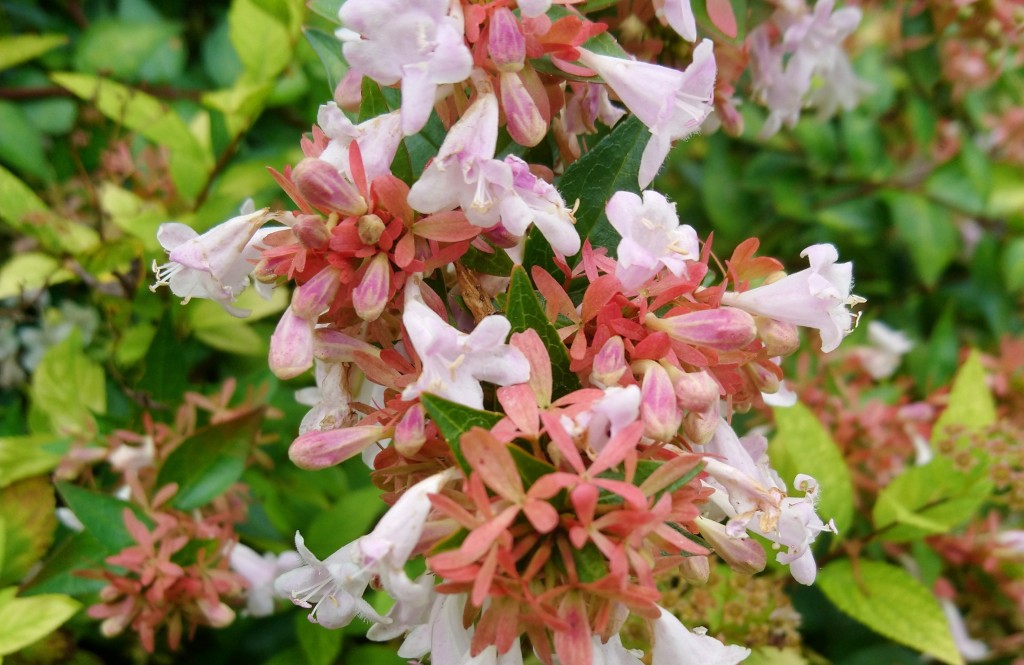
[211] Linnaea x grandiflora, Glossy Abelia
Introduction
Linnaea x grandiflora, Glossy Abelia, is a popular garden plant with attractive flowers, often grown as a hedge.
While it is generally known by the common name Abelia, its Scientific name is not agreed.
Taxonomy
Kingdom – Plants
Division – Vascular Plants
Class – Angiosperms (Flowering Plants)
Order – Dipsacales
Family – Caprifoliaceae
Subfamily – Linnaeoideae
Genus – Linnaea
Scientific Name – Linnaea x grandiflora
Taxonomy is disputed and it is also known as Abelia x grandiflora.
Cultivars are available.
Name
Clarke Abel (1780-81-1826) was a famous naturalist who sailed on Lord Amherst’s embassy to China as a surgeon. He attempted to bring back many seeds and plants but all were lost on a shipwreck. But living plants of Abelia chinensis (now Linnaea chinensis) were brought to England in 1844.
Linnaea borealis used to be the only species in the genus Linnaea, named after Carl Linnaeus, the founder of modern taxonomy, as it was one of his favourite flowers.
Description
As you will remember me saying in other posts, recent DNA studies have recently moved many species and this includes many Abelia species that have moved to Linnaea. As you will also expect by now, this result is not universally agreed. Some botanists still keep them in Abelia.
Linnaea x grandiflora is a direct hybrid between Linnaea chinensis and Linnaea uniflora, coming from a plant raised in 1886 in Verbania on Lake Maggiore in Italy. All plants are derived as cuttings from this plant.
Glossy Abelia is a deciduous shrub with has dark green glossy leaves that turn bronze. Flowers are pendulous, white tinged with pale pink, and flowering continues to late autumn. The calyx (made of sepals, forming the outer layer of the flower,) is bronze red and remains for months after the flowers die.









Habitat and use
Linnaea chinensis and Linnaea uniflora are both native to China and the Far East. Linnaea chinensis has been cultivated in China and Japan.
Other Notes
I have only seen this plant in gardens where it is planted as an ornamental hedge.
Purists may note that for hybrid species such as Linnaea x grandiflora, the genus and epithet should be italicized but the hybrid indicator ‘x’ between them should not be italicized. I have not followed this convention.
